Gum Disease Treatment – Springfield, NJ
Address Periodontal Problems to Enhance Your Oral Health

Did you know gum disease is the number one leading cause of tooth loss? The earliest form starts off small and can often be stopped or reversed with an improved at-home dental hygiene routine. However, you’ll need professional intervention to treat it if it progresses and puts your smile at risk.
Thankfully, our Skyline Dental Team can address periodontal problems to enhance your oral health. Continue reading to learn more about our specific services, and feel free to contact us for additional information!
Why Choose Skyline Dental for Gum Disease Treatment?
- Advanced Technology to Enhance Patient Comfort
- Dentists with 20+ Years of Combined Experience
- Member of the American Dental Association
What is Gum Disease?
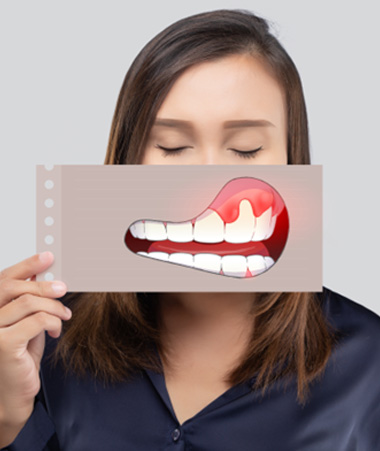
Gum disease occurs when bacteria in your mouth penetrate your connective tissues to cause inflammation and infection. The CDC estimates that this common concern affects about 47.2% of American adults who are 30 years or older, equating to about 64.7 million people.
There are two main kinds, outlined in more detail below:
- This is the earliest stage of gum disease and is easy to miss because it doesn’t always exhibit noticeable symptoms until it worsens. It’s more likely to respond to diligent brushing and flossing and/or a professional cleaning with our team in Springfield.
- If gingivitis goes unaddressed, it’s likely to progress into this more advanced stage. Treatments are intended to manage your condition and preserve your teeth and gums because there’s no permanent cure.
You are more likely to develop periodontal problems if you use tobacco products or smoke, have other medical conditions like diabetes or heart problems, take medications that dry your mouth out, don’t practice regular dental hygiene, or have hormonal changes as a result of pregnancy or other conditions.
Symptoms of Gum Disease
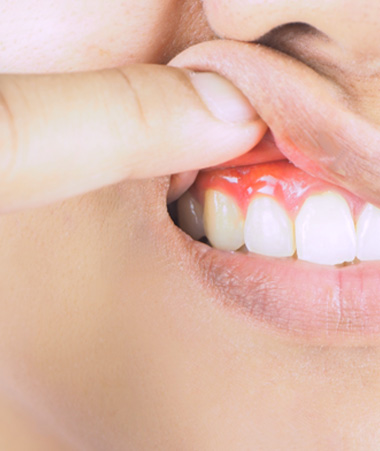
Several potential early indicators can let you know you’ve developed gingivitis, such as:
As it progresses, you might notice additional symptoms, like:
How Do We Treat Gum Disease?
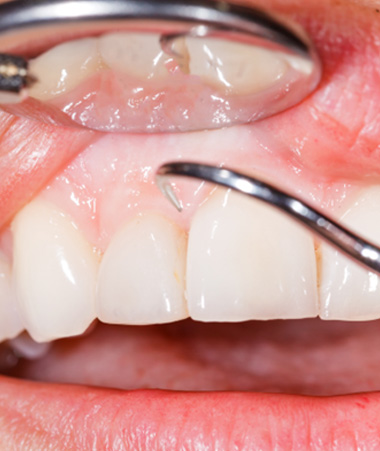
Before proceeding, you must consult with one of our providers in Springfield so they can examine your current condition. Then, they might recommend one of the following treatment options based on their findings and your unique circumstances:
Learn More
Scaling & Root Planing
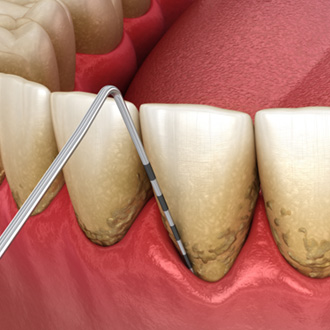
This two-part process typically requires two separate visits to complete from start to finish. At your initial appointment, our team will use specialized instruments to remove stubborn plaque and bacteria from your enamel carefully. We’ll reach deep into the pockets of your gums to eradicate germs hiding there.
We’ll schedule a separate procedure at a different time to gently smooth out the surface of the roots of your teeth, which encourages gum tissue to reattach to anchor them in place.
Antibiotic Treatment
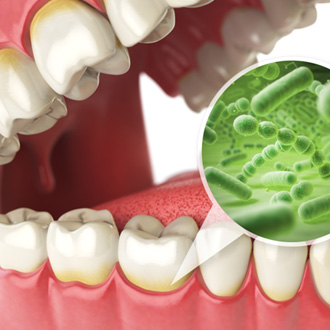
Our team can also target small pockets of bacteria below the surface of your gums and between your teeth with antibiotics. This involves placing medication (typically Arestin) directly onto your connective tissues that dries in place and slowly dissolves over a few days. As it seeps down, it cleans out deep-seated bacteria.
Perio® Flow
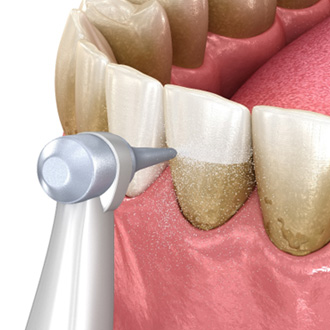
This procedure utilizes a small handheld device containing a small nozzle that directs a concentrated stream of water. This can gently pressure-wash along your gumline to remove plaque and germs. This is a quick and comfortable way to target specific areas of gum disease that have become problematic.
Scaling & Root Planing

The advanced stage of gum disease known as periodontitis will lead to permanent tooth loss and a host of other oral health problems if it is allowed to progress. To prevent this, the team at Skyline Dental often recommends scaling and root planing, also known as dental deep cleaning. This process is designed to eliminate plaque and tartar above, along, and beneath the gumline and encourage the soft tissues to reintegrate with the roots of the teeth. Here’s a brief guide to how this treatment can help you enjoy a healthy and beautiful smile for many years.
Learn More
Do You Need Scaling & Root Planing?

Periodontitis typically shows itself through symptoms like bleeding when brushing or flossing, gum recession, visible accumulations of plaque and tartar, persistent bad breath (halitosis), and swelling of the gum tissue. In many cases, our dentists will treat this infection with scaling and root planing to remove accumulations of infectious matter and help the teeth and gum tissue grow back together.
The earlier stage of gum disease called gingivitis, on the other hand, can usually be addressed by improving your oral hygiene at home. However, gingivitis may still require scaling and root planing if it is at an advanced stage.
The Process of Scaling & Root Planing

This two-part process typically requires two separate visits to complete from start to finish. At your initial appointment, our team will use specialized instruments to carefully remove stubborn plaque and bacteria from your enamel and reach deep into the pockets of your gums to eradicate germs hiding there.
We’ll schedule you for a separate procedure at a later date to gently smooth out the surface of the roots of your teeth, which encourages them to reattach to your gum tissue.
Aftercare Tips for Scaling & Root Planing

Your teeth and gums may require up to several weeks to recover after scaling and root planing. During the healing process, you may experience discomfort and sensitivity, but this can be managed with measures like:
- Rinsing with a solution of warm water and salt to reduce irritation and remove food debris from the surfaces of the teeth and gums.
- Taking over-the-counter pain medication as needed according to the instructions on the label.
- Sticking to a soft diet for the first forty-two hours after treatment.
- Refraining from intense physical exercise immediately after the procedure.
- Avoiding foods and beverages that are hot, spicy, acidic, or alcoholic.
- Abstaining from tobacco use.
- Being especially gentle during your oral hygiene sessions. It’s important to use a soft-bristled toothbrush, fluoridated toothpaste, and short, circular strokes to prevent gum injuries and unnecessary enamel wear.
